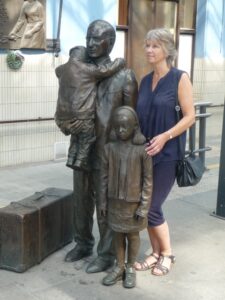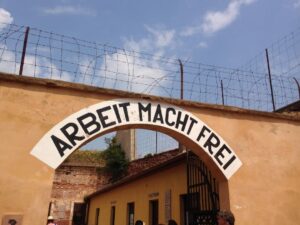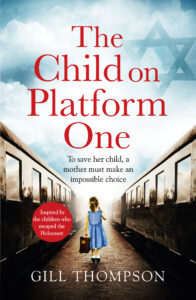 Back in spring 2018, I visited Prague to research my second novel, The Child on Platform One. Known as ‘The City of a Hundred Spires,’ the capital of the Czech Republic is characterised by gothic splendour and quaint medieval charm. It’s dynamic and vibrant, a brilliant collision of past and present.
Back in spring 2018, I visited Prague to research my second novel, The Child on Platform One. Known as ‘The City of a Hundred Spires,’ the capital of the Czech Republic is characterised by gothic splendour and quaint medieval charm. It’s dynamic and vibrant, a brilliant collision of past and present.
But I wasn’t just there to admire the scenery, stunning though it was. If my story was to come to life, I wanted to see for myself the locations I’d placed my characters in. First the conservatoire, a large sand-coloured building situated close to the river between two of its central bridges. My novel starts with a young girl and piano-playing prodigy, Eva, having a music lesson at this famous musical venue. But she is late – we don’t initially know why – so has to hurry home to her parents who will be anxiously awaiting her. For this reason, she takes a short cut through the old Jewish cemetery, a decision with fateful consequences. I was shown round the cemetery by a wonderful Czech guide, herself called Eva, who stood amused whilst I checked my Eva’s route through the graveyard. She agreed with me that Eva would have been able to enter and exit at different points, essential to my plan.
 My next destination was even more sobering: Terezin, the old eighteenth century fortress 60 km northwest of the capital which was converted to a Jewish ghetto for the duration of the war. When I first read about this ‘holding camp,’ the hairs on the back of my neck stood up. Although they were prisoners, fed a meagre diet, and worked until they dropped, the Jewish inmates were allowed to paint, sing, dance and act in their ‘free time,’ most notably performing Verdi’s Requiem to an audience of Germans, who were unaware that the choir were singing of God’s judgement on their captors. As I was shown round the camp with its poignant gallery of portraits, reconstructions of dormitories and the terrifying crematorium, I was moved, appalled and inspired in equal measure. What came across to me most strongly was people’s capacity to use their creative talents to make meaning in the darkest of times. I hope I have brought this quality to life in my novel. It was certainly a tour I will never forget.
My next destination was even more sobering: Terezin, the old eighteenth century fortress 60 km northwest of the capital which was converted to a Jewish ghetto for the duration of the war. When I first read about this ‘holding camp,’ the hairs on the back of my neck stood up. Although they were prisoners, fed a meagre diet, and worked until they dropped, the Jewish inmates were allowed to paint, sing, dance and act in their ‘free time,’ most notably performing Verdi’s Requiem to an audience of Germans, who were unaware that the choir were singing of God’s judgement on their captors. As I was shown round the camp with its poignant gallery of portraits, reconstructions of dormitories and the terrifying crematorium, I was moved, appalled and inspired in equal measure. What came across to me most strongly was people’s capacity to use their creative talents to make meaning in the darkest of times. I hope I have brought this quality to life in my novel. It was certainly a tour I will never forget.
 My final destination was the Wilson station. It was here, on platform one, that I discovered the statue of Sir Nicholas Winton, the British man who rescued 669 children from Nazi-occupied Prague before the start of World War Two. Later in my novel Eva, terrified for the safety of her child, sees her daughter Miriam safely onto one of Winton’s trains before Eva herself is sent to Terezin. It was this episode that finally provided the title for my novel: The Child on Platform One.
My final destination was the Wilson station. It was here, on platform one, that I discovered the statue of Sir Nicholas Winton, the British man who rescued 669 children from Nazi-occupied Prague before the start of World War Two. Later in my novel Eva, terrified for the safety of her child, sees her daughter Miriam safely onto one of Winton’s trains before Eva herself is sent to Terezin. It was this episode that finally provided the title for my novel: The Child on Platform One.
The novel has been published now, and I am delighted that it was also translated into Czech and sold in bookshops throughout the republic. Eva’s story will finally be shared with the people who inspired it.
The beautiful city of Prague won my heart. This is an amazing place to visit but its history is sometimes dark and terrible. I hope I have done these events justice in my novel.

